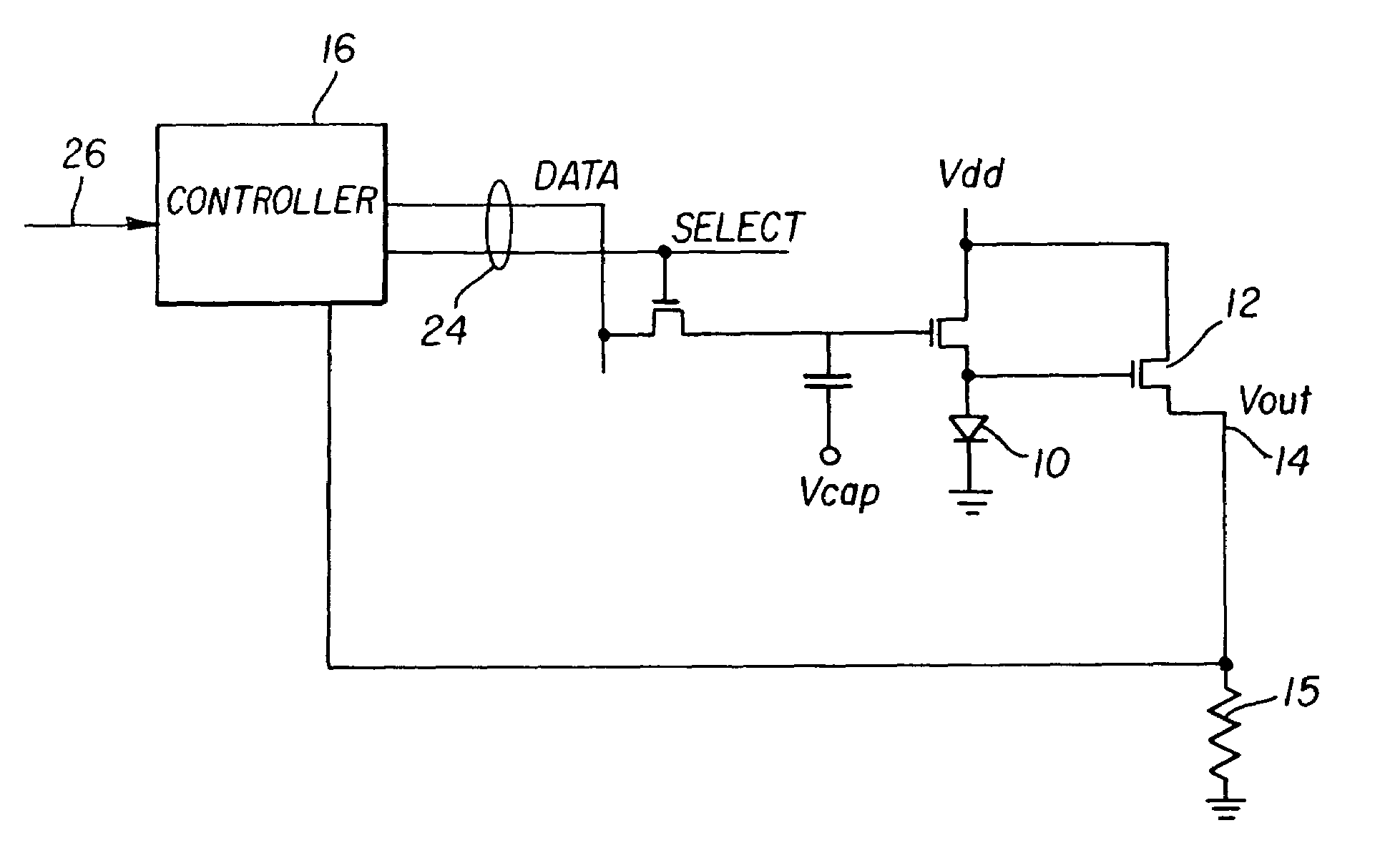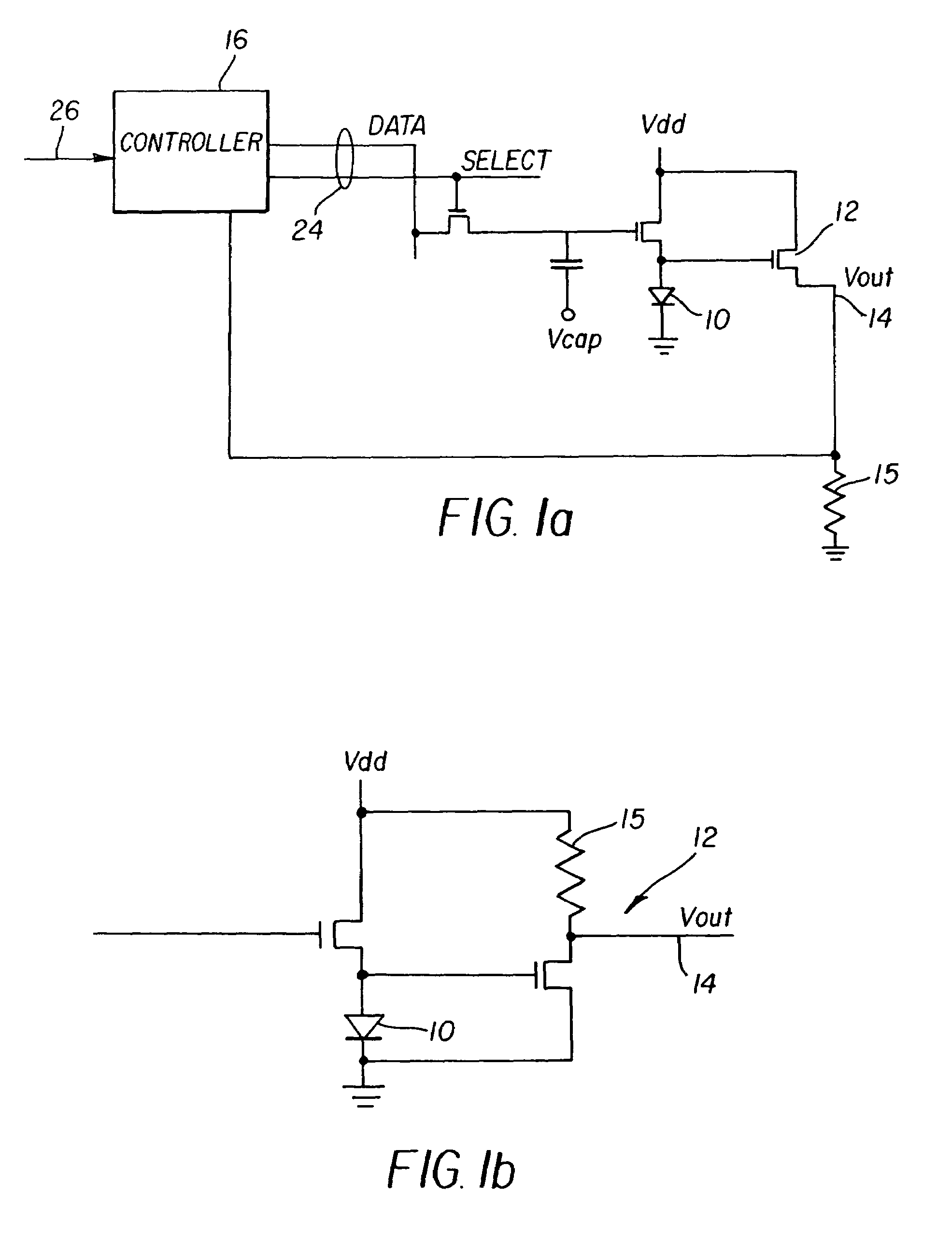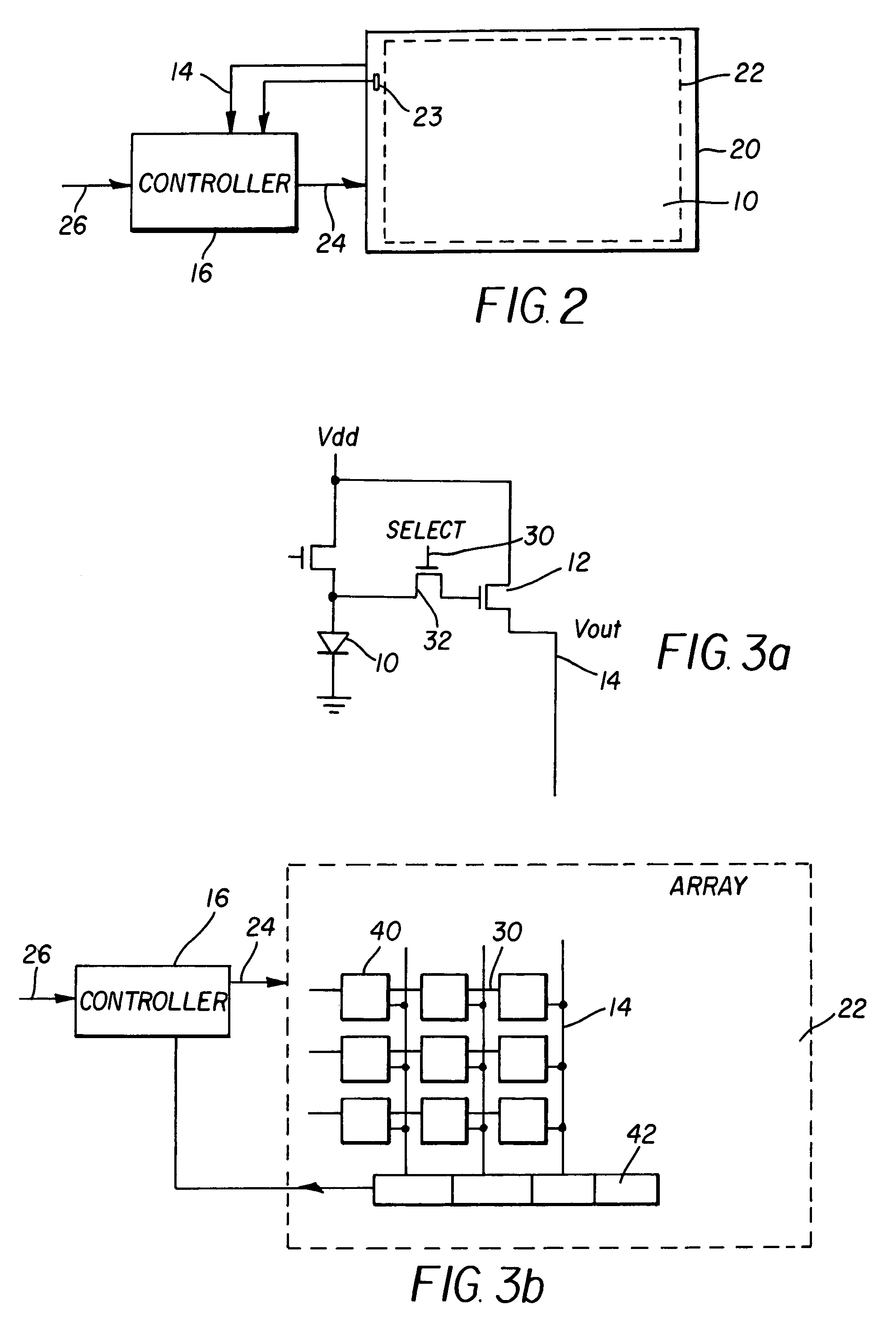OLED display with aging compensation
a technology of aging compensation and oled display, which is applied in the direction of electric variable regulation, process and machine control, instruments, etc., can solve the problems of differential color aging and a display, reducing the lifetime of the display, and aging of organic materials in the display. to achieve the effect of simple voltage measurement circuitry
- Summary
- Abstract
- Description
- Claims
- Application Information
AI Technical Summary
Benefits of technology
Problems solved by technology
Method used
Image
Examples
Embodiment Construction
[0022]Referring to FIG. 1a, an organic light emitting diode (OLED) display according to one embodiment of the present invention comprises an array of OLED light emitting elements 10 (only one of which is shown), each OLED having two terminals; a voltage sensing circuit for each OLED including a transistor 12 in each circuit connected to one of the terminals of a corresponding OLED for sensing the voltage across the OLED to produce a feedback signal 14 representing the voltage across the OLED displays; and a controller 16 for controlling the organic light emitting diode display and responsive to input signal 26 and the feedback signal 14 for calculating a corrected control signal 24 for the OLED and applying the corrected control signal 24 to data used to drive each OLED to compensate for the changes in the output of each OLED 10. A load resistor 15 that is connected between the transistor 12 and ground generates a voltage proportional to the voltage across OLED 10. FIG. 1b illustrat...
PUM
 Login to View More
Login to View More Abstract
Description
Claims
Application Information
 Login to View More
Login to View More - R&D
- Intellectual Property
- Life Sciences
- Materials
- Tech Scout
- Unparalleled Data Quality
- Higher Quality Content
- 60% Fewer Hallucinations
Browse by: Latest US Patents, China's latest patents, Technical Efficacy Thesaurus, Application Domain, Technology Topic, Popular Technical Reports.
© 2025 PatSnap. All rights reserved.Legal|Privacy policy|Modern Slavery Act Transparency Statement|Sitemap|About US| Contact US: help@patsnap.com



